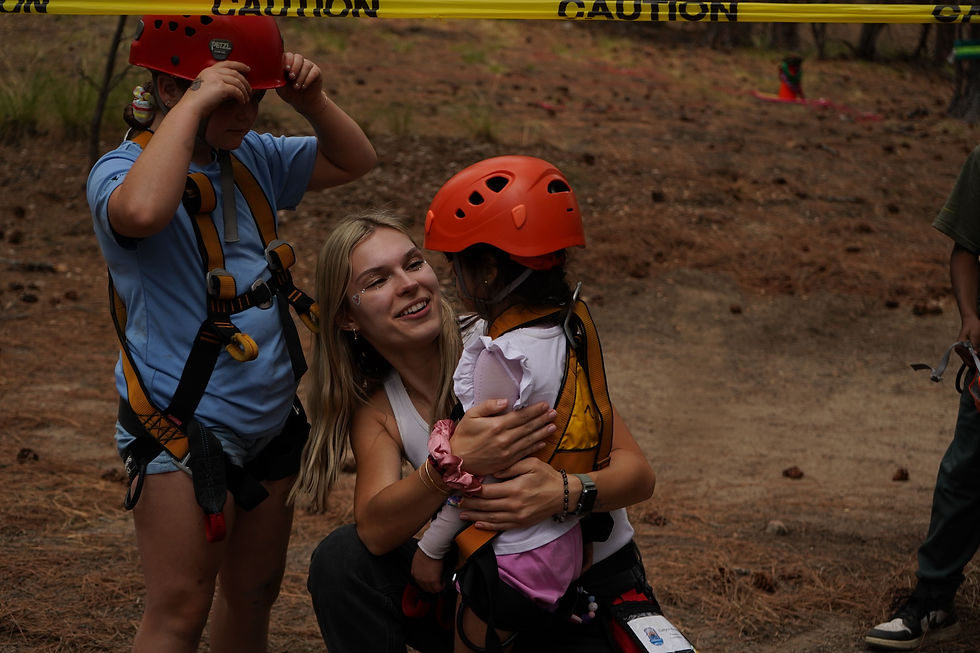From Paint to Performance: Arts Center Shapes Future Generations of Creatives
- Tori Smith
- May 1
- 3 min read
Updated: May 2
By Tori Smith
Molly Phinny, a co-founder of Patagonia Creative Arts Association (PCAA), credits Western Horseman magazine for providing the inspiration that ultimately led to the creation of PCAA. In the late 1990s, Phinny and her husband were looking for a vacation and Circle Z Ranch, located in Patagonia, Arizona, was advertised inside. Originally living in Michigan, Phinny and her husband visited Patagonia a year or two later and bought a house they had seen during their horse rides at the ranch.
PCAA was founded in 1999 by Phinny and Gail Jacobson, an art teacher from Pennsylvania, and has been a community hub for young artists to have a safe space from the outside world.
Located in downtown Patagonia, the current home of PCAA had been many things before: a lumber store, a bank, and a hair salon. Today, it’s full of creative students who are enjoying the many programs that the arts center offers.
Art Classes

PCAA offers two different after-school programs, one of them being Art Makers, which takes place on Mondays and Fridays. The program is a mixed-media arts class and, on Mondays, includes a literacy focus where the day’s art project is centered around a book that’s read aloud. Fridays are more free-flowing.
Cassina Farley and Tammie Quigora, staff at PCAA, also go to local schools and teach art classes to kids from kindergarten through twelfth grade because there isn’t a regular full-time art teacher to do so.
Quigora noted that during the art classes they teach everything from the elements of art, to weaving, to clay. They even bring in local artists. Once, they had an entomologist come in and teach about insects, and then the kids created insect-based art.
Youth under 18 aren’t the only ones that can enjoy PCAA, either. There is typically one adult class a month, such as Valentines classes in February, printmaking, pottery, poetry, writing, and more.
PCAA also goes to Nogales once a month to teach art to developmentally disabled adults through a collaboration with the Santa Cruz Training Programs (SCTP), the Santa Fe Ranch, and PCAA.
Club Theater
Anita Clovesko-Wharton facilitates the Club Theater program and helps on Monday afternoons with the Art Makers program. She’s been involved with the Club Theater program for seventeen years.
Through Club Theater, students are able to have creative freedom in designing characters. The students’creative freedom is a relatively new change which occurred last year during PCAA’s production of a murder mystery, and Clovesko-Wharton plans to continue to give students the reins this year as well.
The Club Theater program meets once a week on Friday afternoons during the school year. Some participants are actors, some help with makeup, and others work in the sound booth: everyone is a part of the team. Once the cast is finished rehearsing, they will perform three shows.
Clovesko-Wharton said that she’s always trying to make the arts center a safe space for those involved. “They’re well nourished, they’re well fed, they feel supported, and their voice is heard,” she said.
Arts Access in Rural Communities

According to Data USA, Patagonia’s population was 882 people in 2023. With support from the Burton Family Foundation and other donors, PCAA is able to keep these programs and classes free for the students, which is Farley’s main target.
“We have a lot of families in our community with financial need, so being able to get as much programming for them for free is my goal,” Farley said.
PCAA doesn’t only provide youth with a creative outlet and a safe environment, they provide them with healthy snacks when they’re at the Art Makers program too. Depending on a student’s situation, they might not be getting what they need at home.
When asked about why PCAA is important to the community, Phinny called the organization a “cornerstone.” Not only can you see artwork from PCAA all around town but, now, the center is seeing generations progress through the organization’s programs. Students that instructors once saw 20 years ago, for example, are now seeing those student’s children.
“It is not only art,” Farley said. “It’s humanities.”
Learn about the Patagonia Creative Arts Association here: https://patagoniacreativearts.org/



